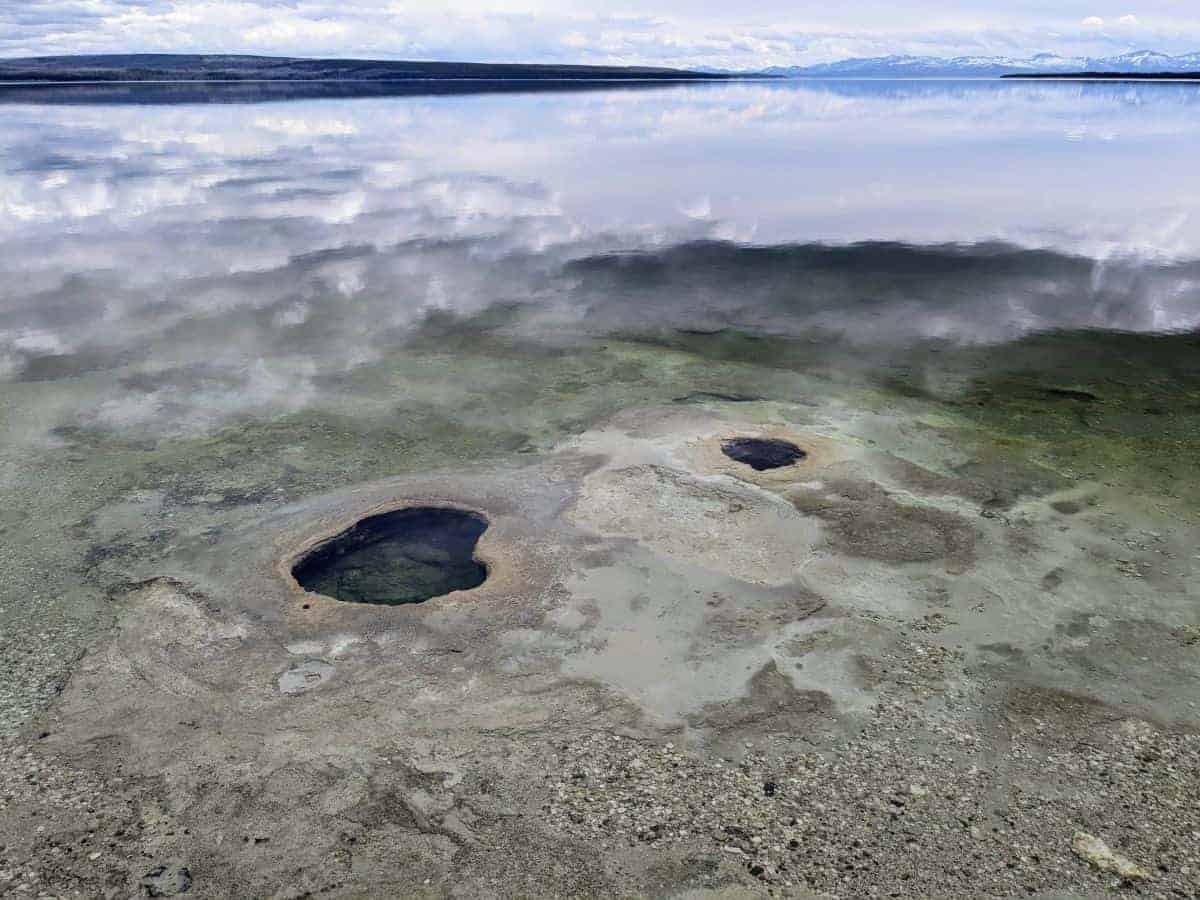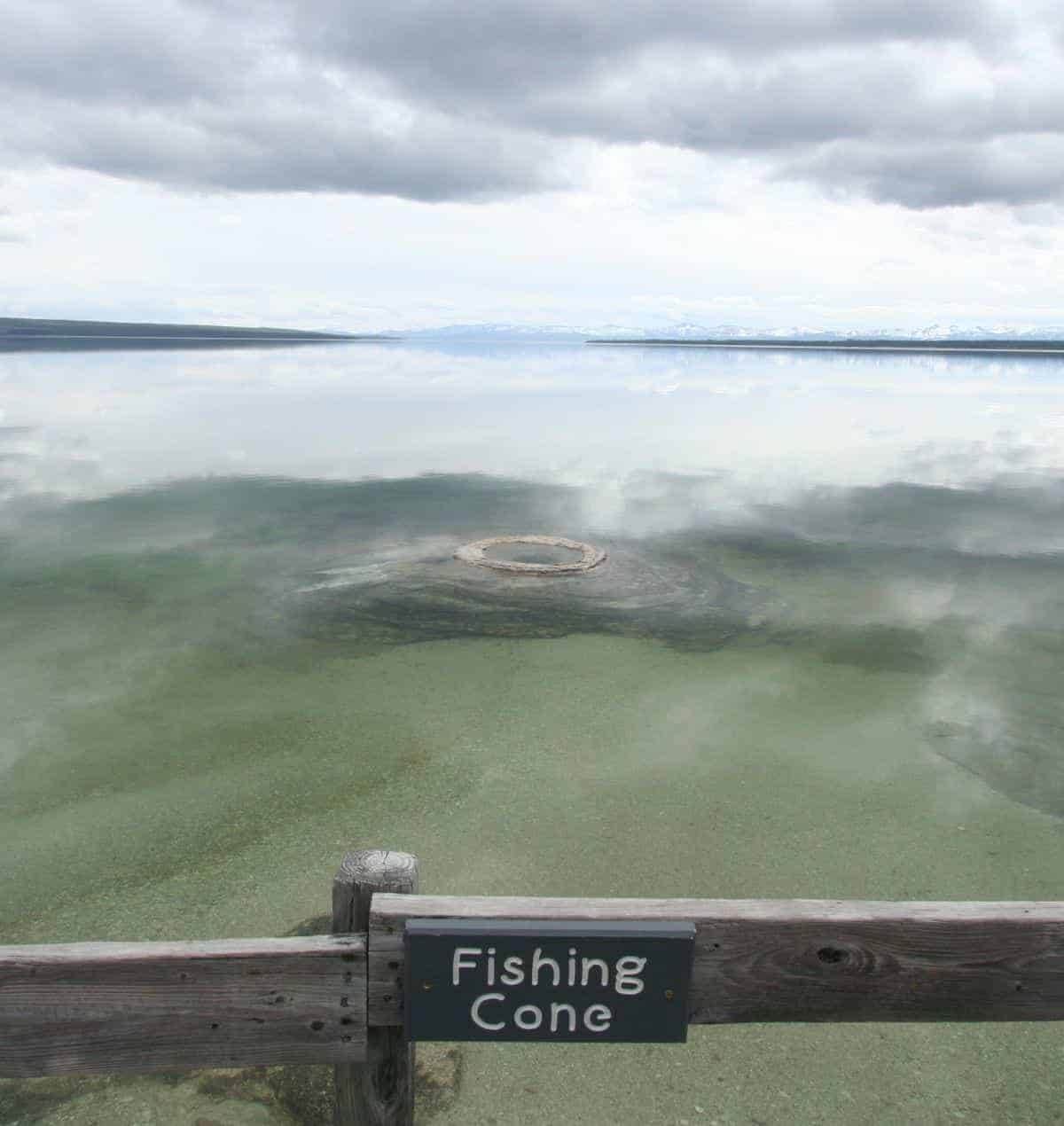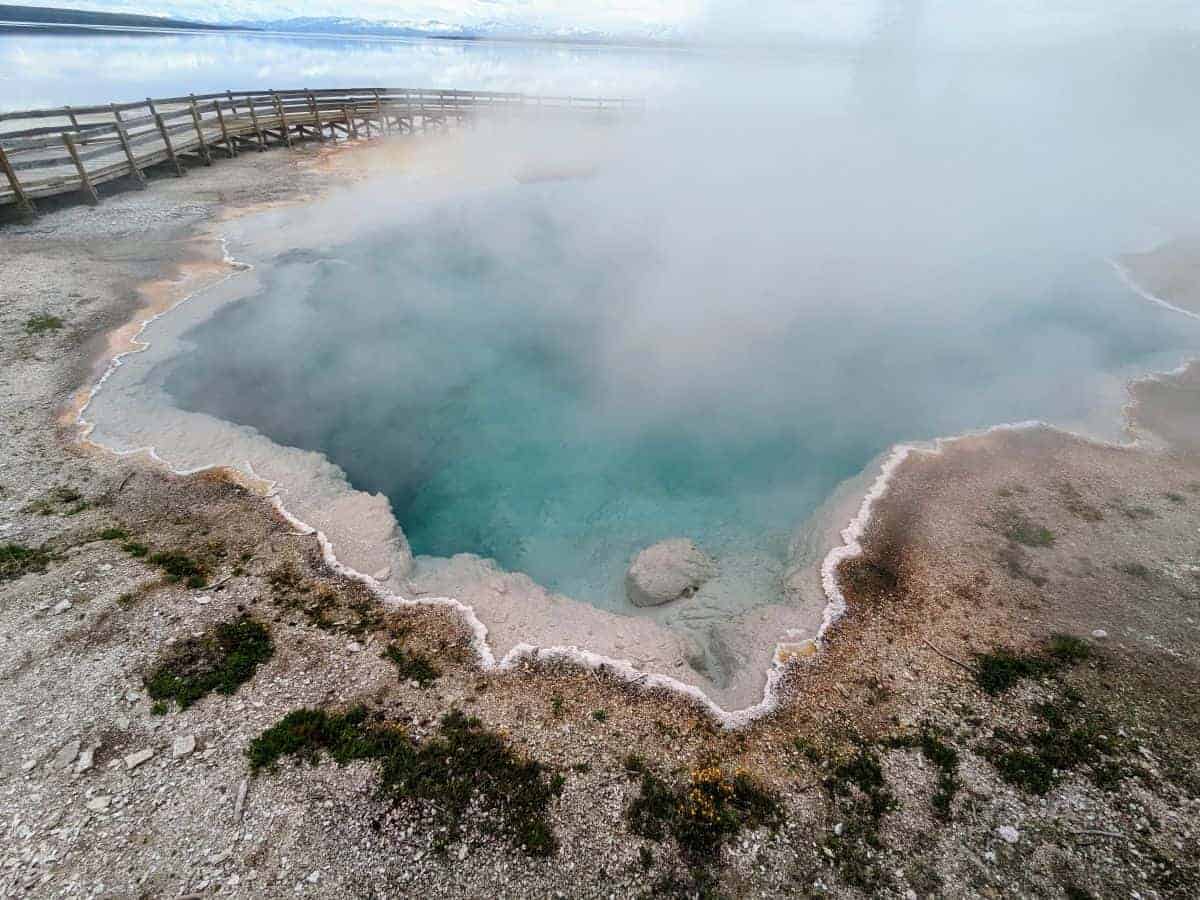What to see in West Thumb: A Guide for First-timers
Learn about what to see in West Thumb Geyser Basin at Yellowstone National Park. It’s a must-see destination for its unique geothermal landscape. This guide offers a quick overview, information on how to get there, and feature highlights, especially for the first-time visitor.
Key things to know
What makes West Thumb different from other Yellowstone geyser basins?
West Thumb Geyser Basin is one of the most unique geothermal features in Yellowstone National Park. It is located on the shore of Yellowstone Lake and was named for the area of the lake on which it sits. The basin is named after a thumb-shaped projection on the western side of the lake. West Thumb was named by members of the 1870 Washburn Expedition, who noted that the geyser basin was shaped like “a human hand with fingers extended.”
West Thumb has become a popular destination for visitors to the park. The close location to Yellowstone Lake creates a unique blend of hydrothermal features and aquatic life. We loved that we could enjoy beautiful views of the lake while exploring the geysers and hot springs, and we think West Thumb is a must-see destination at Yellowstone.

How to get to West Thumb Geyser Basin
The West Thumb Geyser Basin is located on the western shore of Yellowstone Lake, about 22 miles north of the South Entrance (closed from about early November to mid-May). To get there, you can take the Grand Loop Road, which is the main road that circles the park in a sort of figure 8.
Once you arrive at the West Thumb Geyser Basin, you can explore the area on foot. There is a 1-mile loop boardwalk trail that takes you past some of the most impressive hot springs in the park. The trail is well-maintained and easy to navigate, but be sure to wear comfortable shoes.
I’d plan on spending about an hour or so here and then seeing more of this area of the park. West Thumb has become more popular recently, so arriving early in the day increases your chances of finding a parking space. The parking lot here also serves the Duck Lake and Lake Overlook trails.

Things to see in West Thumb Geyser Basin
West Thumb is famous for its hot springs and colorful pools. The colors of the pools come from the presence of thermophilic bacteria that thrive in the hot water.
One of the most impressive features of West Thumb Geyser Basin is the Fishing Cone Geyser. This geyser is unique because it is located in the lake and erupts under the water. Another feature worth seeing is the Abyss Pool, which is one of the deepest hot springs in the world. The pool is a popular spot for photographers.

Highlights of West Thumb include:
- Thumb Paintpots: small mudpools
- Seismograph and Blue Bell Pools
- Lakeside Spring
- Lakeshore Geyser
- Fishing Cone: a geyser under the water on the shore of Lake Yellowstone. The story is that fishermen used to catch fish in the area and then cook them in Fishing Cone.
- Big Cone
- Black Pool
- Abyss Pool
- Twin Geysers

Important Safety Tips
When visiting the West Thumb Geyser Basin, it is important to keep in mind that this is a geothermal area and there are potential hazards.
- Stay on designated boardwalks and trails at all times. The ground may be unstable and dangerous, and venturing off the boardwalks can result in serious injury to you and damage the delicate features.
- Do not touch or throw anything into the hot springs or geysers. The water in these features can reach temperatures of up to 250°F (121°C) and can cause severe burns or scalding.
- Keep a safe distance from wildlife. Keep a distance of at least 100 yards from bears and 25 yards from other wildlife.
- Follow all posted signs and/or instructions from park rangers. They are there to ensure your safety and the preservation of the park for future generations.

Top 5 things to see near West Thumb
When visiting West Thumb Geyser Basin, there are several other attractions in the general area that are worth checking out. Here are my top five recommendations:
- Yellowstone Lake: Located right next to West Thumb (and indeed overlapping it in a way), Yellowstone Lake is the largest body of water in Yellowstone National Park. Fun Yellowstone Fact: Yellowstone Lake is also the largest lake at elevation in North America. It offers beautiful views and a variety of recreational activities. There are a number of picnic areas between West Thumb and Lake Village that make great spots for enjoying your lunch after walking around West Thumb Geyser Basin.
- Fishing Bridge: This historic bridge spans the Yellowstone River and used to be a popular spot for fishing. It’s located a few miles off the Grand Loop Road toward the East Entrance.
- Grant Village: Named after President Ulysses S. Grant, this village is located just a few miles south of West Thumb. It offers a variety of amenities, including lodging, restaurants, and a visitor center.
- Hayden Valley: North of Yellowstone Lake, Hayden Valley offers excellent wildlife viewing. It’s less popular than Lamar Valley in the park’s northeast but should not be overlooked.
- Old Faithful: While not exactly near West Thumb, Old Faithful is one of the most iconic attractions in Yellowstone National Park and, of course, is definitely worth a visit. It’s located in the Upper Geyser Basin, about 20 miles west of West Thumb.
Explore off the beaten path and see more Yellowstone hidden gems.
West Thumb FAQs
What is the best time to visit West Thumb Geyser Basin?
The best time to visit West Thumb Geyser Basin is during the summer months, from June to August when the weather is mild and the roads and trails are open. Visitors can also appreciate the area’s beauty during fall and spring when there are fewer crowds. Keep in mind that a lot of the services in the nearby Grant Village are closed from late October to late May.
How long does it take to explore the West Thumb Geyser Basin?
It takes about 1-2 hours to explore West Thumb Geyser Basin, depending on how much time you want to spend at each attraction. The area is small enough to easily explore on foot, and there is a 1-mile loop trail that takes you past some of the most impressive geysers and hot springs in the park.
What should I wear when visiting West Thumb Geyser Basin?
When visiting West Thumb Geyser Basin, it is important to wear comfortable shoes suitable for walking the wooden boardwalks, as well as layered clothing that can be adjusted for changing weather. For more help, see my article all about what to pack for Yellowstone.